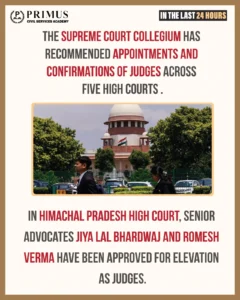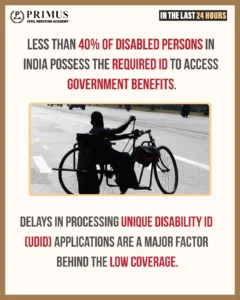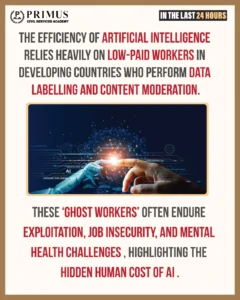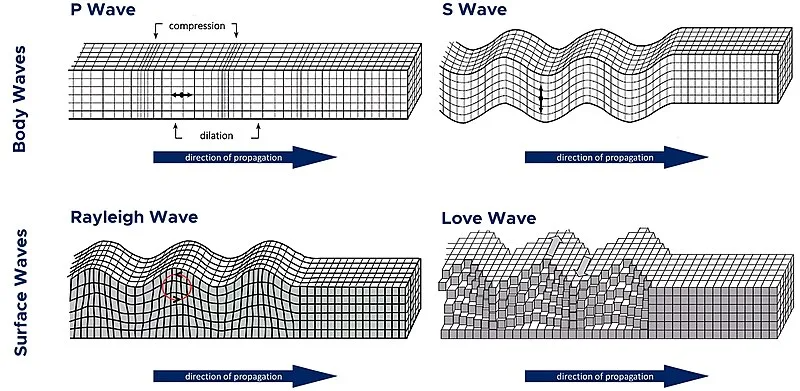September 17th Current Affairs
Table of Contents
Kannada Literature Optional Syllabus
Home / ಐಚ್ಚಿಕ ಕನ್ನಡ ಸಾಹಿತ್ಯದ ಪಠ್ಯಕ್ರಮ ಐಚ್ಚಿಕ ಕನ್ನಡ ಸಾಹಿತ್ಯ ಪತ್ರಿಕೆ – 1 ವಿಭಾಗ – ಎ ಅ) ಕನ್ನಡ ಭಾಷೆಯ ಚರಿತ್ರೆ ಭಾಷೆ
UPSC Current Affairs – October 6th
October 06th Current Affairs Home / Table of Contents 36-hour curfew imposed in parts of Odisha’s Cuttack over communal tensions
Religious Minorities in India and the Challenge of Communal Harmony: A Sociological Reflection on the Cuttack Violence
Home / Religious Minorities in India and the Challenge of Communal Harmony: A Sociological Reflection on the Cuttack Violence Sociology
UPSC Current Affairs – October 4th
October 04th Current Affairs Home / Table of Contents Isabgol Processors threaten to halt purchases from October 6th over GST
Sologamy and Contemporary Trends in Marriage: A Sociological Perspective
Home / Sologamy and Contemporary Trends in Marriage: A Sociological Perspective Sociology Paper 1: Systems of Kinship – Contemporary trends
UPSC Current Affairs – October 3rd
October 03rd Current Affairs Home / Table of Contents NASA IMAP to show how solar particles are energised and shield
Understanding Indian Festivals through Durkheim: Religion, Rituals, and Collective Conscience
Home / Understanding Indian Festivals through Durkheim: Religion, Rituals, and Collective Conscience Sociology Paper 1: Émile Durkheim – Religion and
UPSC Current Affairs – September 30th
September 30th Current Affairs Home / Table of Contents Ladakh groups reject talks with government, Ministry says open to dialogue
Caste Census in India: A Sociological Perspective
Home / Caste Census in India: A Sociological Perspective Sociology Paper 2: Caste System – Features of Caste system. The
Constitutional Morality: Upholding India’s Democratic Ethos
Home / Constitutional Morality: Upholding India’s Democratic Ethos Sociology Paper 2: Visions of Social Change in India – Constitution, law,
Fossil fuels leave toxic mark on human health from birth to death, study finds

Relevance to UPSC
GS Paper 2 (Governance, Social Justice, Health):
- Public Health
- Right to Health
- Social Justice & Vulnerable Populations
- Role of State in Regulation & Welfare
GS Paper 3 (Environment, Economy, Science & Tech):
- Climate Change & Greenhouse Gas Emissions
- Environmental Pollution & Human Health
- Energy Policy (Fossil fuels vs Renewables)
- Sustainable Development
More About the News
- Report & Source: “Cradle to Grave: The Health Toll of Fossil Fuels and the Imperative for a Just Transition” — Global Climate and Health Alliance.
- Health Impact Across Lifecycle: Fossil fuels negatively affect human health at all stages — extraction, processing, transport, combustion, and waste — and across all ages, from fetal development to old age.
- Types of Health Problems: Includes miscarriages, childhood leukemia, asthma, cancers, strokes, cardiovascular diseases, and neurological disorders.
- Equity & Policy Implications: Harm is disproportionately borne by poorer countries and vulnerable populations; recommends just transition, subsidy removal, stronger regulation, and investment in clean energy and public health.
Pollution
Pollution, the introduction of harmful substances or energy into the environment, disrupts natural ecosystems and poses serious health risks. It spans air, water, soil, noise, and more, affecting both human and ecological well-being. With rapid industrialization, urbanization, and population growth, controlling pollution has become a critical challenge for sustainable development.
Key Trends in Pollution
- Rapid urbanization and industrial growth have increased air and water pollution levels.
- Vehicular emissions are the largest contributors to urban air pollution.
- Industrial effluents, pesticide use, and untreated sewage majorly pollute water bodies.
- Global warming and climate change intensify pollution-related health and environmental risks.
Types of Pollution
- Air Pollution: PM2.5, PM10, SO₂, NOx, CO, VOCs
- Water Pollution: Industrial effluents, plastic waste, sewage, agricultural runoff
- Soil Pollution: Pesticides, heavy metals, e-waste, industrial chemicals
- Noise Pollution: Industrial, transport, construction noise
- Light Pollution: Excessive urban lighting affecting ecosystems
- Thermal & Radioactive Pollution: Nuclear plants, industrial effluents
Constitutional & Non-Constitutional Provisions
- Constitutional:
- Article 48A: Protect environment and forests (Directive Principle)
- Article 51A(g): Fundamental duty to protect natural environment
- Non-Constitutional / Legal:
- Environment Protection Act, 1986
- Water (Prevention & Control of Pollution) Act, 1974
- Air (Prevention & Control of Pollution) Act, 1981
- Hazardous Waste Management Rules, 2016
Bodies / Authorities / Ministries
- Ministries: Ministry of Environment, Forest & Climate Change (MoEFCC), Ministry of Jal Shakti, Ministry of Health & Family Welfare, Ministry of Housing & Urban Affairs
- Authorities: Central Pollution Control Board (CPCB), State Pollution Control Boards (SPCBs), National Green Tribunal (NGT)
Causes of Pollution
- Industrial Emissions: Factories release smoke, particulate matter, and chemicals.
Example: Air pollution in Delhi & Kanpur due to thermal power plants.
- Vehicular Emissions: Exhaust gases contribute to urban smog.
Example: Heavy traffic in Mumbai and Bangalore increasing PM2.5 levels.
- Agricultural Activities: Excessive use of chemical fertilizers and pesticides.
Example: Nitrate contamination in groundwater in Punjab & Haryana.
- Improper Waste Management: Open dumping and burning of solid waste
Example: Plastic waste accumulation in Ganga & Yamuna rivers.
- Deforestation & Urbanization: Soil erosion, dust, and increased runoff.
Example: Soil degradation in rapidly urbanizing areas like Bengaluru outskirts.
Impacts of Pollution
- Health Hazards: Respiratory and cardiovascular diseases, cancers. Example: Increase in asthma and lung cancer cases in Delhi NCR due to smog.
- Environmental Degradation: Loss of soil fertility, water contamination. Example: Eutrophication in Chilika Lake due to chemical runoff.
- Biodiversity Loss: Threats to aquatic and terrestrial species. Example: Endangered fish species in polluted Ganga and Yamuna rivers.
- Economic Costs: Loss of productivity and healthcare burden. Example: Increased hospitalization costs in urban centers due to air pollution.
- Climate Change Contribution: Greenhouse gas emissions worsen global warming. Example: CO₂ emissions from coal-fired power plants.
Challenges in Containing Pollution
- Rapid Urbanization & Population Growth: High vehicular emissions and waste. Example: Delhi’s rising air pollution despite regulations.
- Weak Enforcement of Laws: Non-compliance by industries. Example: Illegal industrial effluents in the Yamuna despite Water Act.
- Public Awareness & Behaviour: Open burning of waste and littering. Example: Diwali firecracker pollution spikes in North India.
- Industrial & Economic Pressures: Reluctance to adopt cleaner technologies. Example: Small-scale industries in Ludhiana using outdated boilers.
- Infrastructure Limitations: Lack of proper sewage and waste treatment. Example: Untreated wastewater flowing into rivers like Mithi in Mumbai.
Government Measures Taken
- National Clean Air Programme (NCAP)
- Swachh Bharat Mission (urban & rural sanitation)
- Ganga Action Plan & Namami Gange Mission
- Promotion of electric vehicles and renewable energy
- Enforcement through NGT, CPCB, SPCBs
Best Practices
- India:
- Chennai’s Solid Waste Management model (segregation & recycling)
- Delhi’s Odd-Even vehicular scheme to reduce air pollution
- Global:
- Sweden’s carbon tax and strict emission norms
- Singapore’s integrated waste-to-energy management system
Way Forward
- Strengthen enforcement of pollution control laws
- Promote circular economy and zero-waste policies
- Invest in clean technologies and renewable energy
- Enhance public awareness & community participation
- Integrate environmental education in schools and policy frameworks
Pollution control is crucial for safeguarding human health, biodiversity, and long-term economic sustainability. The challenge requires coordinated action by government, industry, and citizens. Adopting cleaner technologies, stringent regulations, and public participation can ensure a sustainable and resilient environment for future generations.
Prelims MCQ
Q. Consider the following statements regarding pollution control in India: 1. Article 51A(g) of the Constitution makes it a fundamental duty of citizens to protect and improve the natural environment. 2. The National Green Tribunal (NGT) has powers equivalent to a civil court for handling environmental disputes. 3. The Hazardous Waste Management Rules, 2016, regulate only industrial emissions and do not cover e-waste. Which of the statements given above is/are correct?
A. 1 and 2 only
B. 2 and 3 only
C. 1 and 3 only
D. 1, 2 and 3 only
Mains Question
Q. Pollution poses a multi-dimensional threat to health, environment, and economic development in India. Critically examine the causes, impacts, and challenges of pollution control in India, and suggest measures for a sustainable and just transition.
CCI has not identified any conduct that denied market access to rivals, Meta tells NCLAT

Relevance to UPSC
GS Paper 2: Governance & Polity
- Competition Law and Policy:
- Understanding the role of regulatory bodies like the Competition Commission of India (CCI) in maintaining market competition.
- Examining the legal frameworks governing anti-competitive practices and their enforcement.
- Regulatory Mechanisms in India:
- Analyzing the functioning and authority of quasi-judicial bodies such as the National Company Law Appellate Tribunal (NCLAT).
- Assessing the interplay between government agencies and private corporations in regulatory matters.
- Corporate Governance and Accountability:
- Investigating corporate practices concerning market access and competition.
- Evaluating the ethical considerations and responsibilities of multinational corporations operating in India.
More About the News
- Meta’s Statement: Meta Platforms Inc. has informed the NCLAT that the CCI has not identified any actions by the company that would have denied market access to its competitors.
- Regulatory Scrutiny: This statement comes amid ongoing scrutiny by Indian regulators concerning potential anti-competitive practices in the digital market.
- Legal Proceedings: The matter is currently under examination by the NCLAT, which will assess the validity of the CCI’s findings and Meta’s defense.
Competition Commission of India (CCI)
The Competition Commission of India (CCI) is India’s statutory antitrust regulator, created to prevent anti-competitive practices, promote competition and protect consumer welfare in markets. It was established under the Competition Act, 2002 and became operational in phases from 2003 (fully functional later). In an era of platform power and cross-border digital markets (eg. EU & US actions against Google), CCI’s role in policing self-preferencing, cartels and mergers is increasingly important for India’s digital sovereignty and consumer protection.
Evolution
- Pre-2003 — India’s competition policy was governed by the Monopolies & Restrictive Trade Practices (MRTP) Act; growing complexity of markets indicated the need for a modern law.
- 2002–2003 — Competition Act, 2002 enacted (came into force in stages); CCI established by the Central Government on 14 Oct 2003 under Section 7.
- 2009 onward — CCI grew in capacity and began high-profile enforcement (cartel busts, merger reviews) as more sections came into force.
- 2019–2020 — CCI conducted a major Market Study on E-commerce and started focused scrutiny of digital platforms.
- 2023 (Amendment) — Competition (Amendment) Act, 2023 introduced procedural and substantive reforms (deal-value threshold for combinations, settlement/commitment mechanisms, expanded regulatory tools).
Statutory Provisions
The Competition Act, 2002 provides the framework:
- Sec 3 – Anti-competitive agreements (cartels).
- Sec 4 – Abuse of dominant position.
- Sec 5–6 – Regulation of mergers/combinations.
- Sec 7–12 – Establishment & composition of CCI.
- Sec 18 – Duties & functions.
- Sec 27 – Powers to issue orders/penalties.
The 2023 Amendment introduced new tools: deal-value thresholds, and settlement/commitment mechanisms for quicker, flexible enforcement.
Advantages of having CCI
- Protects market competition and consumer welfare. Example: CCI’s decisive action against the cement cartel (2012) broke price-fixing that harmed consumers and buyers, imposing large penalties and cease-and-desist orders.
- Deters cartelisation and unfair price coordination. Example: The Lesser-Penalty/Leniency Regulations (2009) incentivise whistleblowers.
- Regulates dominant firms to prevent self-preferencing. Example: CCI’s probe/orders in cases involving Google (Android/Play Store/Smart TV OS) show the CCI can target platform rules that lock out rivals.
- Transparent merger control—prevents harmful combinations. Example: The Act’s combinations regime (and new 2023 deal-value threshold) ensures large mergers are reviewed so a single firm does not acquire market power that would harm competition..
- Competition advocacy and capacity building. Example: CCI’s Market Study on E-commerce (2020) produced policy recommendations used by other regulators and policymakers.
Challenges Faced by CCI
Resource & capacity constraints for fast, technical digital markets
Example: Complex ad-tech and platform cases (like global Google adtech suits) require deep data-forensics and technical economic expertise.Jurisdictional overlap with sectoral regulators & legal friction
Example: Overlap can arise with regulators like SEBI, TRAI or RBI on platform-financial or media matters.Delay & lengthy appeals process reduces deterrence
Example: Large cartel investigations (cement, others) went through long litigation and appeals (COMPAT/NCLAT), slowing remedy and allowing business uncertainty.Penalty calculation & enforcement difficulties
Example: CCI’s methodology for quantum of penalty has faced judicial scrutiny in several appeals (questions on turnover vs profit-based approaches). This creates unpredictability in sanctions.Cross-border enforcement & data access limits
Example: Digital platform cases often involve non-resident firms and extraterritorial data; CCI must rely on MOUs or co-operation agreements to access evidence abroad (making swift action harder).
Best initiatives of CCI
- Leniency / Lesser Penalty Regulations (2009) — incentivises cartel whistleblowers and has triggered major enforcement actions.
- Market Study on E-commerce (2020) — comprehensive review guiding policy on platforms, deep-discounting, dual role of platforms and impact on sellers/consumers.
- International MOUs & cooperation — bilateral MoUs with DG COMP (EU), Competition Bureau Canada, ACCC, BRICS peers to tackle cross-border issues.
- Use of dawn raids/inspections & fast enforcement tools — demonstrated in recent raids (eg. 2025 ad-industry actions) where leniency tip-offs led to immediate evidence gathering.
- Adoption of settlement/commitment frameworks under 2023 Amendment — to speed resolution and reduce litigation.
Best practices
Global
- European Union — Digital Markets Act (DMA): regulatory ex-ante rules for “gatekeepers” (obligations to stop self-preferencing, promote interoperability)—shows regulatory clarity for large platforms beyond classical antitrust. Useful model for platform-specific rules.
- United States — DOJ/FTC coordinated litigative approach: heavy litigation (Sherman Act, monopolisation) and remedies (data sharing, behavioural orders or structural remedies) demonstrate aggressive enforcement against platform monopolies.
Indian
- CCI Market Study on E-commerce (2020) — evidence-based policy inputs tailored to Indian market structure; shaped debates on platform regulation and informed government consultations.
- Leniency Program + active dawn raids (recent ad-industry probes, 2025) — shows operational use of leniency to uncover cartels and obtain actionable evidence domestically.
Way Forward
- Build specialised digital/econ forensic units within CCI for ad-tech, platforms and AI-driven markets.
- Operationalise 2023 Amendment rules quickly to speed merger & remedy processes.
- Strengthen cross-regulator coordination (MOUs & joint protocols) with SEBI, TRAI, RBI and foreign agencies for cohesive oversight of platform-heavy markets.
- Transparent penalty guidelines & improved adjudication timelines to reduce litigation and increase predictability of enforcement.
- Active competition advocacy & MSME support and educate MSMEs and start-ups about fair contractual terms and remedies
As digital platforms become central to India’s economy, CCI must evolve from an investigative body into a proactive, technology-savvy regulator — combining rule-making, rapid enforcement and international cooperation. Strengthening technical capacity, faster merger review, and clearer behavioural rules (inspired by DMA-style clarity) will enable India to protect consumers while preserving innovation. CCI’s trajectory will shape India’s role in global platform governance.
Prelims MCQ
Q.Consider the following statements regarding the Competition Commission of India (CCI): 1. The CCI is a statutory body established under the Competition Act, 2002. 2. It has the power to regulate prices of goods and services in the market. 3. CCI can impose penalties on companies found guilty of anti-competitive practices, including abuse of dominant position and cartels. 4. Its orders are appealable before the National Company Law Tribunal (NCLT) and NCLAT. Which of the statements given above is/are correct?
A. 1 and 2 only
B. 1, 3 and 4 only
C. 2 and 3 only
D. 1, 2, 3 and 4
Mains Question
Q. Examine the role of the Competition Commission of India in promoting fair competition and regulating anti-competitive practices. Discuss the challenges it faces in the digital economy and the measures required to strengthen its regulatory framework.
Supreme Court Collegium recommends appointment, confirmation of Judges in five High Courts

Relevance to UPSC
GS Paper 2: Governance, Constitution, Polity, Social Justice
- Judicial Appointments & Collegium System:
- Examines the role of the Supreme Court Collegium in recommending appointments and confirmations of judges.
- Highlights the constitutional framework and evolution of the Collegium system.
- Judicial Independence & Accountability:
- Discusses how appointments impact the independence and accountability of the judiciary.
- Analyzes the balance between executive and judicial powers in judicial appointments.
- Representation & Diversity in Judiciary:
- Considers the implications of appointments for regional, gender, and social representation within the judiciary.
More About the News
- Collegium Recommendations: The Supreme Court Collegium has recommended the appointment and confirmation of judges in five High Courts.
- Constitutional Framework: These recommendations are made under the provisions of the Constitution of India, specifically Articles 124 and 217.
- Impact on Judiciary: The appointments aim to address vacancies and ensure the efficient functioning of the judiciary.
Collegium System
The Collegium System in India is the method by which judges of the Supreme Court and High Courts are appointed and transferred. Evolved through judicial pronouncements rather than statutory law, it emphasizes judicial independence by limiting executive interference. While it has helped maintain autonomy, it has also faced criticism for opacity and lack of accountability.
Evolution of the Collegium System
- First Judges Case (S.P. Gupta v. Union of India, 1981): Favored primacy of the executive in judicial appointments.
- Second Judges Case (Supreme Court Advocates-on-Record Association v. Union of India, 1993): Established that the Chief Justice of India (CJI) and senior judges have primacy in appointments → formalizing the Collegium.
- Third Judges Case (1998): Clarified that the Collegium of CJI + four senior-most Supreme Court judges will recommend appointments.
- Practice Established: High Court judges’ appointments require consultation with state governors, High Court chief justices, and the Supreme Court Collegium.
Constitutional & Non-Constitutional Provisions
- Constitutional:
- Article 124: Appointment of Supreme Court judges.
- Article 217: Appointment of High Court judges.
- Article 222: Transfer of High Court judges.
- Non-Constitutional / Judicial Pronouncements:
- Second & Third Judges Cases laid down the Collegium system.
- No explicit statutory backing; relies on conventions established by Supreme Court rulings.
How does the Collegium System Work
- Initiation of Appointment:
- For Supreme Court judges: The Collegium is headed by the Chief Justice of India (CJI) along with the four senior-most Supreme Court judges.
- For High Court judges: The recommendation is made by the Supreme Court Collegium in consultation with the High Court Chief Justice and senior judges.
- Recommendation Process:
- Names of eligible candidates are proposed based on merit, seniority, and integrity.
- Inputs are taken from the High Court collegium (for HC judges) and other senior judges.
- Consultation & Verification:
- Background checks are conducted, including character, reputation, and track record.
- Inputs may also be sought from the Ministry of Law and Justice and local bar associations.
- Collegium Decision:
- The Collegium meets to finalize the list of recommended judges.
- Decisions are based on consensus or majority among members.
- Submission to Executive:
- The recommendations are sent to the President of India through the Law Ministry.
- The President formally appoints judges based on the Collegium’s recommendation.
- Role of the Executive:
- The government can request reconsideration but cannot reject the Collegium’s recommendation arbitrarily.
- If reconsidered, the Collegium may confirm or modify the recommendation.
- Transfer of Judges:
- Collegium also decides the transfer of High Court judges to other High Courts for administrative reasons or judicial efficiency.
Advantages of the Collegium System
Judicial Independence: Reduces executive influence
Example: Prevented political interference in SC appointments in the 1990s.Merit-Based Selection: Senior judges can assess legal competence
Example: Selection of highly reputed judges like Justice D.Y. Chandrachud.Uniform Standards: Ensures consistent criteria across appointments
Example: Transparency in seniority-based selections.Insulation from Political Pressures: Minimizes favoritism
Example: Appointment of judges during politically sensitive periods without executive bias.Promotes Judicial Accountability Internally: Peer evaluation ensures competence
Example: Recommendations by senior judges for capable HC judges.
Disadvantages of the Collegium System
Opacity / Lack of Transparency: Decisions are not publicly explained
Example: Names recommended without a publicly available rationale.Limited Accountability: No mechanism to question Collegium decisions
Example: Criticism over delays in appointments.Slow Appointments: Leads to vacancies and pendency
Example: High Court vacancies exceeding 20% in 2023.Potential Bias: Subjectivity in recommendations
Example: Perception of favoritism in certain HC appointments.Excludes Executive & Public Input: Reduces diversity of perspective
Example: Overlooking regional or minority representation.
Criticisms Faced
Opaque Process: No formal criteria published
Example: The public is often unaware of why a judge is recommended.Delay in Appointments: Pendency in HC and SC appointments
Example: Several High Courts operating with vacancies >30%.Nepotism Allegations: Preference for judges from elite backgrounds
Example: Recurrent criticism in media reports of appointments from select bar associations.Lack of Accountability: Collegium is not answerable to Parliament
Example: Repeated judicial delays without executive intervention.Conflict with Democratic Principles: Reduces the executive role
Example: Strains separation-of-powers debate.
99th Constitutional Amendment Act (2014)
- Provisions: Created the National Judicial Appointments Commission (NJAC) to replace the Collegium; included 6 members, CJI, 2 senior SC judges, Law Minister, 2 eminent persons.
- Objective: To increase transparency and include the executive & civil representation in judicial appointments.
- Outcome: Struck down by SC in 2015 and termed NJAC unconstitutional as it was against the Basic Structure Doctrine because it violated Article 50 of the India Constitution, which says separation of the Executive and the Judiciary, Hence, the Collegium system was restored.
Collegium System in India vs judicial appointment systems in other democracies
Feature | India (Collegium System) | USA | UK | Canada |
Appointment Authority | President appoints judges on recommendation of the Collegium (SC: CJI + 4 senior judges; HC: SC Collegium + Governor) | President nominates, Senate confirms | Judicial Appointments Commission recommends; formal appointment by Monarch | Governor General appoints on PM’s advice after advisory committees |
Basis for Selection | Seniority, merit, peer evaluation | Merit, political/ideological considerations | Merit-based, through independent commission | Merit-based, advisory committees review candidates |
Role of Executive | Minimal; mostly consultative | Significant; President nominates | Limited; formal appointment role only | Limited; PM advises Governor General |
Transparency | Low; no public reasoning for recommendations | Moderate; Senate hearings public | Moderate; JAC publishes selection criteria | Moderate; advisory committees maintain transparency |
Removal of Judges | By Parliament through impeachment (proven misbehavior or incapacity) | By Congress impeachment for “high crimes and misdemeanors” | By Monarch on advice; rare and formal | By Parliament through impeachment for misconduct |
Checks and Balances | Collegium ensures judicial independence; minimal executive interference | Senate confirmation ensures legislative oversight | Commission ensures independence; executive formal role only | Advisory committees + executive oversight balance independence and accountability |
Way Forward
- Introduce transparent and merit-based procedures within the Collegium.
- Publish clear criteria and reasons for appointments.
- Encourage balanced representation of regions, genders, and social groups.
- Maintain judicial independence while improving accountability.
Ensuring a balance between judicial independence and transparency will be critical for the legitimacy of the Collegium System. Institutional reforms, including clear criteria and accountability mechanisms, can strengthen public trust. With thoughtful modernization, the system can continue to uphold meritocracy while fostering a more representative and efficient judiciary.
Prelims MCQ
Q.Consider the following statements regarding the Collegium System in India:
1. It is explicitly mentioned in the Constitution of India.
2. It was evolved through Supreme Court judgments to ensure judicial independence.
3. The National Judicial Appointments Commission (NJAC) was upheld as constitutional by the Supreme Court in 2015.
Which of the statements given above is/are correct?
A. 1 and 2 only
B. 2 only
C. 2 and 3 only
D. 1, 2, and 3
Statement 1 is incorrect: Collegium is not in the Constitution; it evolved from judicial rulings. Statement 2 is correct: Evolved via Second and Third Judges Cases. Statement 3 is incorrect: NJAC was struck down in 2015 as unconstitutional.
Mains Question
Q. Critically examine the Collegium System in India for the appointment and transfer of judges. Discuss its advantages, shortcomings, and suggest reforms to make it more transparent and accountable without compromising judicial independence.
Less than 40% of disabled persons in India have the ID needed for benefits

Relevance to UPSC
GS Paper 1: Indian Society
- Social Empowerment: Sheds light on the systemic barriers hindering PwDs from availing entitlements, reflecting on societal inclusivity.
GS Paper 2: Governance, Constitution, Polity, Social Justice
- Social Justice & Vulnerable Populations: Highlights the challenges faced by persons with disabilities (PwDs) in accessing government benefits due to lack of proper identification.
- Role of State in Regulation & Welfare: Emphasizes the need for effective implementation of welfare schemes and the importance of accessible identification systems.
More about the News
- Low UDID Coverage: Less than 40% of disabled persons in India possess the Unique Disability Identity (UDID) card, which is essential for accessing government benefits.
- Implementation Challenges: The UDID scheme faces delays and implementation issues, affecting its reach and effectiveness.
- Policy Implications: The situation underscores the need for stronger policy enforcement and infrastructure to ensure that all PwDs are registered and can access their entitled benefits.
Persons with Disabilities (PwD)
Persons with Disabilities (PwDs) constitute a vulnerable group requiring special protections for full social, economic, and political participation. With India ratifying the UN Convention on the Rights of Persons with Disabilities (UNCRPD), disability rights are now seen as integral to human rights, dignity, and inclusive development.
Who are Persons with Disabilities (PwD) ?
- Defined under the Rights of Persons with Disabilities (RPwD) Act, 2016 as individuals with long-term physical, mental, intellectual, or sensory impairments which, in interaction with barriers, hinder full participation in society.
- Categories expanded from 7 (PWD Act, 1995) to 21 disabilities (RPwD Act, 2016).
Critical Data
- 2011 Census: ~2.68 crore PwDs (2.21% of population).
- UN estimate: 15% of the world’s population lives with disabilities.
- India fact: 70% of PwDs live in rural areas; literacy rate ~55%.
- Employment gap: Only ~34% PwDs employed vs. ~60% general population.
Constitutional Provisions Related to PwD
- Article 14 & 15: Equality before law; prohibition of discrimination.
- Article 16: Equal opportunity in public employment.
- Article 21: Right to life with dignity.
- Directive Principles: Art. 41 (right to work, education, assistance), Art. 46 (promotion of weaker sections).
- 73rd & 74th Amendments: Local body reservations (in some states).
Non-Constitutional Provisions Related to PwD
- RPwD Act, 2016 – Expands disability categories; 4% reservation in jobs, 5% in higher education.
- National Policy for PwDs, 2006 – Equal opportunities & social security.
- Accessible India Campaign (Sugamya Bharat Abhiyan, 2015) – Barrier-free access to buildings, transport, ICT.
- Rehabilitation Council of India Act, 1992 – Standardizes training of rehab professionals.
- Mental Healthcare Act, 2017 – Rights-based approach for persons with mental illness.
Challenges Faced by PwD
Accessibility Barriers – Public transport, schools, workplaces remain largely inaccessible
Example: Poor implementation of the Accessible India Campaign.Employment Discrimination – Low hiring despite job quotas
Example: Backlog vacancies in UPSC, SSC are not fully filled.Education Gaps – Limited inclusive schooling and assistive technologies
Example: Only 61% PwD children attend school, 2019 NSSO.Social Stigma – Disabilities are often seen through a charity/medical lens rather than rights
Example: Mental health stigma worsened during COVID-19.Implementation Deficit – Schemes are underfunded, the certification process for disability benefits is cumbersome
Example: Delays in the Unique Disability ID project.
Government Initiatives
- RPwD Act, 2016 – Rights-based legal framework.
- Sugamya Bharat Abhiyan (2015) – Universal accessibility.
- Unique Disability ID (UDID) Project – Digital ID for availing benefits.
- Deendayal Disabled Rehabilitation Scheme (DDRS) – Financial support to NGOs.
- Reservation in jobs & education – 4% in central govt jobs; 5% in higher education.
- Inclusive Education schemes – Samagra Shiksha, scholarships for PwDs.
Global Best Practices
- United States – Americans with Disabilities Act (ADA, 1990): Landmark civil rights law ensuring accessibility in public spaces, employment, and digital platforms.
- Japan – Community-Based Rehabilitation (CBR): Focus on integrating PwDs into local communities with accessible transport, inclusive schools, and social participation.
Best Practices in India
- Kerala’s “Barrier-Free Tourism Project”: Developed disabled-friendly tourist destinations with ramps, tactile paths, and sign language interpretation.
- Delhi Metro Accessibility Model: Fully accessible stations with lifts, ramps, Braille buttons, and reserved spaces, recognized as a model for inclusive urban transport.
Way Forward
- Universal Accessibility – Ensure barrier-free infrastructure in cities, villages, digital platforms.
- Skilling & Employability – Market-linked training for PwDs.
- Awareness & Social Sensitization – Campaigns to fight stigma.
- Data & Monitoring – Update disability data in Census & NSS surveys.
- Tech & Innovation – Promote assistive devices and AI-driven accessibility tools.
Disability inclusion is not just welfare, but a human rights and development imperative. With strong legal frameworks and global commitments, India must move beyond tokenism to mainstream disability in governance, economy, and society. A future-oriented approach would make India a model of inclusive growth and social justice.
Prelims MCQ
Q. Consider the following statements regarding the rights and welfare of Persons with Disabilities (PwDs) in India:
1. The Rights of Persons with Disabilities Act, 2016, increased the number of recognized disabilities from 7 to 21.
2. The Unique Disability ID (UDID) scheme aims to provide a single identification card for PwDs to access benefits.
3.Article 46 of the Constitution of India mandates the State to provide PwDs with free healthcare and financial assistance.
Which of the statements given above is/are correct?
A. 1 and 2 only
B. 2 and 3 only
C. 1 and 3 only
D. 1, 2 and 3
Statement 1 is correct: RPwD Act, 2016, recognizes 21 categories of disabilities. Statement 2 is correct: UDID provides a single identity card to access benefits. Statement 3 is incorrect: Article 46 directs the State to promote the welfare of weaker sections but does not specifically mandate free healthcare or financial assistance to PwDs. .
Mains Question
Q. Despite legal frameworks like the RPwD Act, 2016, and schemes like UDID, a significant proportion of Persons with Disabilities in India are unable to access benefits. Critically examine the reasons and suggest measures to improve the inclusion and welfare of PwDs.
The hidden human cost of Artificial Intelligence

Relevance to UPSC
GS Paper 3: Science & Technology, Environment, Economy, Security
- Ethical Dimensions of Technology
- Impact on Labor Markets
- Regulatory Oversight
More about the News
- Invisible Labor: The article reveals that AI systems’ human-like responses are made possible by the invisible labor of low-paid workers who train and moderate these systems.
- “Cognitive Colonialism”: It describes this hidden labor as a form of “cognitive colonialism,” where human judgment is extracted from the Global South for profit.
- Critique of Tech Industry Ethics: Criticizes the tech industry’s ethical posturing, showing how convenience for some is built on the suffering of others.
Artificial Intelligence
Artificial Intelligence (AI) is the branch of computer science that enables machines to perform tasks that typically require human intelligence, such as problem-solving, decision-making, learning, and language understanding. AI systems can mimic human cognitive functions through algorithms, data analysis, and pattern recognition.
Evolution of AI
- 1950s – Conceptualization: Alan Turing proposes the Turing Test; concept of machine intelligence emerges.
- 1956 – Dartmouth Conference: Birth of AI as an academic discipline.
- 1970s–1980s – Expert Systems: AI systems designed for specific problem-solving, e.g., medical diagnosis systems.
- 1990s–2000s – Machine Learning & Big Data: Algorithms improve using large datasets; IBM Deep Blue beats Garry Kasparov.
- 2010s–Present – Deep Learning & Neural Networks: AI applications expand to NLP, computer vision, robotics, and autonomous systems.
Key Trends in AI
- Growth of Chatbots and NLP systems (e.g., ChatGPT).
- Expansion in computer vision and facial recognition.
- Increasing use in autonomous vehicles and robotics.
- Integration with IoT and cloud computing.
- Focus on AI ethics, bias, and regulation.
How AI Works
- AI systems gather data from diverse sources.
- Algorithms and models (machine learning, deep learning) analyze patterns.
- Systems learn from feedback and improve over time.
- Outputs are used for decision-making, prediction, or automation.
Types of AI
- Narrow AI (Weak AI): Performs specific tasks. Example: Voice assistants.
- General AI (Strong AI): Can perform any intellectual task like humans,it’s still a theoretical concept.
- Superintelligent AI: Surpasses human intelligence, it’s a futuristic concept.
Functions of AI
- Problem-solving and reasoning
- Natural Language Processing (NLP)
- Computer vision and image recognition
- Robotics and autonomous systems
- Predictive analytics and decision-making
Advantages of AI
Automation of Tasks – Reduces manual labour
Example: Robotic process automation in banks.Enhanced Efficiency – Faster decision-making
Example: AI algorithms for stock market predictions.Healthcare Advancements – Early diagnosis
Example: AI detecting cancer from radiology images.Safety in Hazardous Jobs – Reduces human exposure
Example: AI-controlled mining robots.Data Analysis & Insights – Large-scale pattern recognition
Example: Recommendation engines on e-commerce sites.
Disadvantages of AI
Job Displacement – Automation can replace humans
Example: Self-checkout systems in retail.High Implementation Cost – Expensive infrastructure
Example: Autonomous vehicle technology.Dependence on Data Quality – Poor data can lead to errors
Example: Biased AI recruitment tools.Ethical Concerns – AI decision-making lacks empathy
Example: Predictive policing raising discrimination issues.Security Risks – Vulnerable to cyber attacks
Example: AI in autonomous drones being hacked.
Impacts of AI
Economic Growth – Drives new industries
Example: AI-driven fintech solutions.Healthcare Improvement – Better patient outcomes
Example: AI-powered telemedicine platforms.Education – Personalized learning
Example: AI-based adaptive learning platforms.Governance – Efficient public service delivery
Example: AI in traffic management in smart cities.Environment – Climate modeling and energy efficiency
Example: AI optimizing power grids.
Challenges Faced
Data Privacy Issues – Massive personal data usage
Example: Facial recognition in public spaces.Algorithmic Bias – Prejudiced outputs
Example: Recruitment through AI is favoring certain demographics.Lack of Skilled Workforce – Shortage of AI experts
Example: India’s AI talent gap.Ethical & Legal Frameworks – Absence of regulation
Example: Autonomous vehicle liability issues.High Costs of R&D – AI research requires heavy investment
Example: Deep learning infrastructure.
Government Measures Taken
- National Strategy for AI (NSAI) by NITI Aayog.
- Establishment of Centers of Excellence in AI across universities.
- Promotion of AI in healthcare, agriculture, smart cities.
- Collaboration with private sector and international partners for AI development.
- Drafting AI ethics and regulatory frameworks.
Best Practices
- EU AI Act for ethical AI regulation.
- China’s AI-driven urban traffic management systems.
Way Forward
- Develop transparent, ethical AI regulations.
- Promote AI literacy and skill development across sectors.
- Ensure inclusive AI deployment, minimizing bias and inequity.
- Encourage public-private partnerships in AI R&D.
- Strengthen data privacy and cybersecurity measures.
AI has the potential to transform economies, governance, and daily life, but must be developed responsibly. Balancing innovation with ethical, social, and legal safeguards will ensure equitable benefits. India can leverage AI for sustainable development while protecting human rights and promoting inclusive growth.
Prelims MCQ
Q. Consider the following statements about Artificial Intelligence (AI):
1. Narrow AI is designed to perform a single specific task, whereas General AI can perform any intellectual task that a human can.
2. AI systems always operate without human intervention in all contexts.
3. The National Strategy for Artificial Intelligence (NSAI) was formulated by NITI Aayog.
Which of the statements given above is/are correct?
A. 1 and 2 only
B. 2 and 3 only
C. 1 and 3 only
D. 1, 2 and 3
Poshan Abhiyaan is a Centrally Sponsored Scheme, not a Central Sector Scheme. It aims to reduce malnutrition and uses Poshan Tracker App for ICT-based monitoring. Statement 1 is incorrect.
Mains Question
Q. Artificial Intelligence promises economic growth, social transformation, and efficient governance, but also raises ethical, social, and security challenges. Critically examine its potential, impacts, and the measures needed for responsible AI deployment in India.




